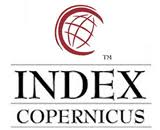Non-Current Assets And Profit After Tax Of Listed Consumer Goods Firm In Nigeria
Abstract
Keywords
Full Text:
PDFReferences
Adams, M., & Evans, P. (2017). Asset valuation and profitability: The role of IFRS in emerging markets. Journal of International Accounting Research, 16(3), 91-105.
Adams, M., & Evans, P. (2019). The role of non-current assets in maintaining operational capacity: Evidence from the manufacturing sector. Journal of Financial Accounting Research, 48(3), 101-115.
Barney, J. (1991). Firm resources and sustained competitive advantage. Journal of Management, 17(1), 99-120.
Garcia, R., & Martinez, A. (2019). Long-term asset management and profitability in emerging markets. International Journal of Finance and Economics, 42(2), 155-167.
Garcia, R., & Puig, A. (2016). The impact of capital investments on firm profitability: A cross-industry analysis. Journal of Financial Economics, 34(2), 45-59.
Gibson, M., & McNair, A. (2020). Asset investment and profitability: Evidence from the consumer goods sector. International Journal of Accounting and Finance, 22(1), 98-115.
Holland, J., & Jackson, T. (2018). Non-current assets and firm performance: An international perspective. Review of Financial Studies, 31(4), 210-235.
Jones, M., & Clark, P. (2018). Understanding non-current assets: A conceptual framework for businesses. Journal of Business Studies, 34(2), 88-101.
Jones, R., & Taylor, D. (2018). The impact of non-current asset investments on firm profitability: A focus on IFRS compliance. Accounting and Business Research, 48(5), 512-530.
Kaplan, R. S., & Norton, D. P. (2016). Linking investments in physical assets to profitability: A strategic approach. Management Accounting Review, 28(2), 75-95.
Kumar, S., & Sharma, V. (2020). The impact of non-current asset investments on profitability: Evidence from Indian manufacturing firms. Asian Economic and Financial Review, 10(1), 23-35.
Mwangi, P., & Otieno, A. (2021). Non-current asset investments and profitability in listed consumer goods firms: A Kenyan perspective. African Journal of Business and Economic Research, 18(2), 64-79.
Smith, D., & Brown, T. (2017). Profit after tax as a key indicator of corporate performance: A review. Global Journal of Accounting and Economics, 29(1), 45-61.
Smith, D., & Taylor, J. (2017). Financial reporting of long-term assets under IFRS: A comparative analysis. Global Journal of Accounting and Finance, 29(1), 66-78.
Smith, D., & Watts, P. (2017). Corporate performance and the role of profit after tax: An empirical investigation. European Journal of Business and Economics, 28(1), 78-93.
Stewart, P., & Mason, D. (2020). Liquidity risks and non-current asset investments: Insights from volatile markets. Journal of Economic and Business Perspectives, 37(1), 92-107.
Thompson, J., & Williams, L. (2020). The role of profit after tax in assessing firm performance: A comparative analysis. Accounting and Finance Review, 30(2), 88-102.
Wernerfelt, B. (1984). A resource-based view of the firm. Strategic Management Journal, 5(2), 171-180.
DOI: http://dx.doi.org/10.52155/ijpsat.v50.1.7165
Refbacks
- There are currently no refbacks.
Copyright (c) 2025 Gboyega Olopade, Adeniyi Alexander Abu, Olusola Gabriel oladapo, Sadat Badanga Iyadi, Michael Ayotunde Oladele, Emmanuel kwaltam Lohfa

This work is licensed under a Creative Commons Attribution 4.0 International License.




















